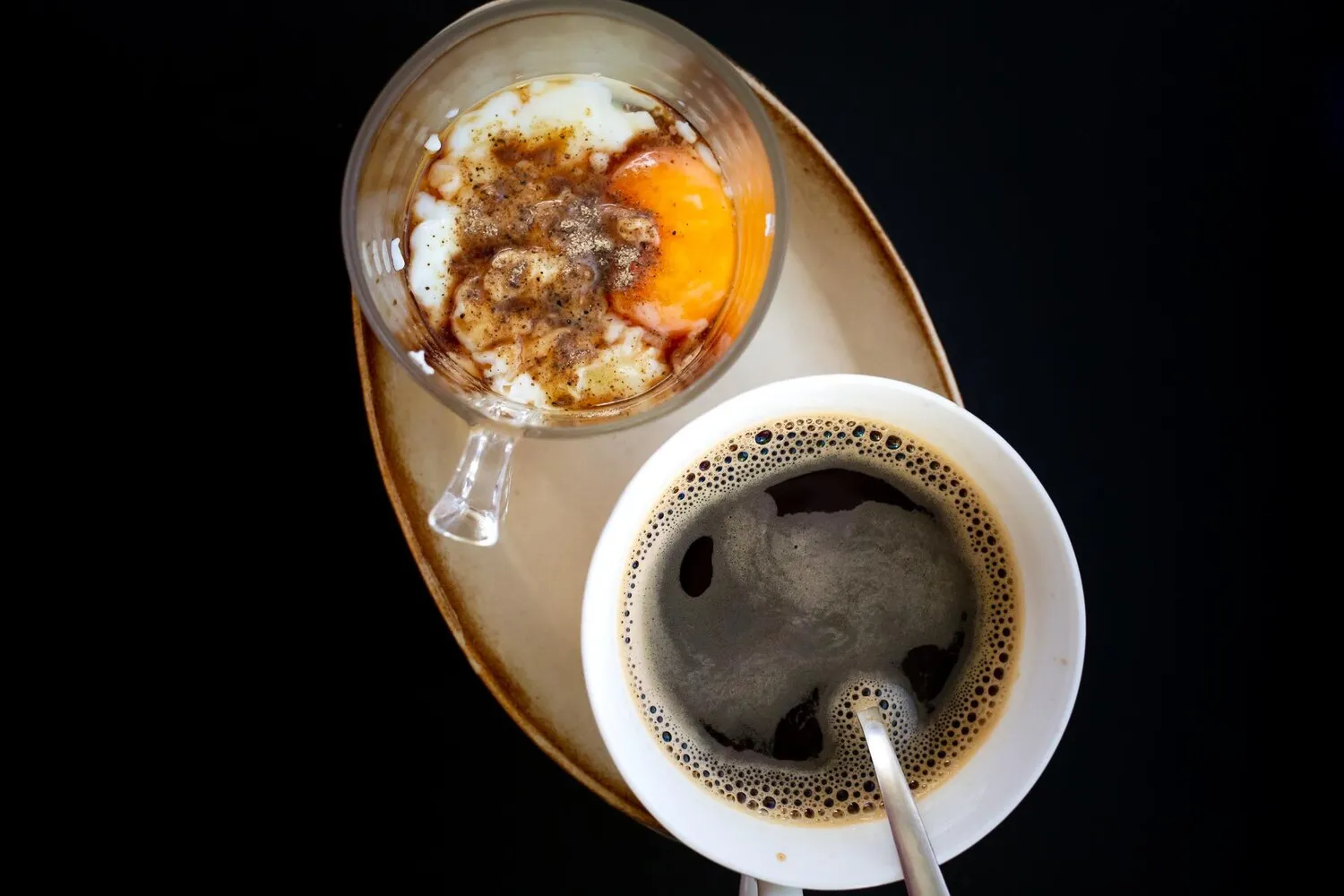
Café Expresso
Espresso coffee.
Nutrition Facts
* The % Daily Value (DV) tells you how much a nutrient in a serving of food contributes to a daily diet. 2,000 calories a day is used for general nutrition advice.
Espresso's history began in the late 19th century in Turin, Italy, driven by the desire for a faster coffee brewing method to serve customers more efficiently. Early espresso machines were complex and manually operated, but innovations quickly led to more refined and consistent methods of production and extraction. The word 'espresso' itself denotes 'expressed' or 'forced out,' referencing the pressurized brewing process.
Espresso is deeply ingrained in Italian culture and has spread globally, becoming a staple in coffee shops and homes worldwide. It's not merely a beverage but a social ritual, a quick pick-me-up, and a foundation for various other coffee drinks.
Italian Coffee Culture
In Italy, espresso is typically consumed quickly at the bar, often standing. It's a fast and social experience, frequently enjoyed multiple times a day.
Foundation for other drinks
Espresso serves as the base for popular drinks like cappuccinos, lattes, macchiatos, and Americanos, allowing for diverse flavor combinations.
Social Gathering
Coffee breaks featuring Espresso have become a social institution across the globe. A moment for connection and community.
Espresso boasts a concentrated and intense flavor profile characterized by rich, bold, and often slightly bitter notes. The flavor is highly dependent on the bean origin, roast level, and brewing technique.
Espresso flavors typically include dark chocolate, caramel, nuts (such as hazelnut or almond), and toasted bread. Depending on the coffee bean origin, there may also be fruit notes such as berries or citrus. Bitterness is present but should be balanced by sweetness and acidity. Crema, the reddish-brown foam on top, contributes to the texture and initial perception of richness. The body is full and syrupy.
Grind Size Matters
Use a fine grind that is appropriate for Espresso machines. Too coarse results in weak under-extracted coffee; too fine leads to over-extraction and bitter taste.
Tamping Technique
Apply consistent and even tamping pressure (around 30 lbs) to create a uniform puck of coffee grounds for even water flow.
Water Temperature
Ideal water temperature for espresso is between 195-205°F (90-96°C). This helps extract the flavors without burning the coffee.
Extraction Time
Aim for an extraction time of around 25-30 seconds for a double shot (approximately 2 ounces). Shorter or longer times will impact the taste profile.
Explore additional Coffee dishes and restaurants
Explore CoffeeDiscover top dining spots and culinary experiences in Guarulhos.
Explore GuarulhosLearn more about the food culture, restaurant scene, and culinary heritage of Brazil.
Explore Brazil